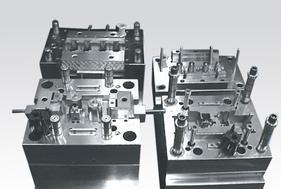Analysis on the causes of cracking of special products for injection mold
Cracking, including filiform cracks, microcracks, white tops, cracks on the surface of the parts, and trauma crises caused by part sticking and runner sticking, can be divided into demoulding cracking and application cracking according to the cracking time. There are mainly the following reasons:

1. Processing:
(1) Too much processing pressure, too fast speed, more filling, and too long injection and pressure holding time will cause excessive internal stress and cracking.
(2) Adjust the mold opening speed and pressure to prevent demoulding cracking caused by rapid strong drawing.
(3) Appropriately increase the mold temperature to make the parts easy to demould, and appropriately reduce the material temperature to prevent decomposition.
(4) Prevent cracking due to low mechanical strength caused by fusion marks and plastic degradation.
(5) Use release agent properly, and pay attention to often eliminate the aerosol and other substances attached to the mold surface.
(6) The residual stress of parts can be eliminated by annealing heat treatment immediately after forming to reduce the generation of cracks.
2. Mold:
(1) The ejection should be balanced, such as the number of bars above, the cross-sectional area should be sufficient, the demoulding angle should be sufficient, and the surface of the cavity should be smooth enough to prevent residual stress concentration and fracture due to external forces.
(2) The product structure should not be too thin, and the transition part should be used in arc transition to avoid sharp corners and chamfer stress.
(3) Try to use less metal insertion, in order to prevent the insertion of parts and the shrinkage of the workpiece caused by increased stress.
(4) Appropriate release air ducts shall be set to the deep part to prevent vacuum from forming negative pressure.
(5) The sprue is enough to demould the sprue before curing, so it is easy to demould.
(6) The connection between the sprue bushing and the nozzle should prevent the cold hard material from dragging and making the workpiece stick to the fixed mold.
3. Material:
(1) The recycled material content is too high, resulting in low strength of the parts.
(2) Excessive humidity causes some plastics to react with water vapor, reducing strength and causing ejection cracking.
(3) The material itself is not suitable for the processing environment or poor quality, and will cause cracking if it is polluted.
4. Machine:
The plasticizing capacity of the injection molding machine should be appropriate. If it is too small, the plasticizing is insufficient, and it cannot be completely mixed, it will become brittle, and if it is too large, it will degrade.